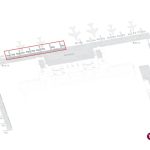The Historic Fall Of The Berlin Wall: Unveiling The Untold Stories Of APUSH
The Fall of the Berlin Wall: A Turning Point in History
Introduction
Hello Berlin Visitors,
1 Picture Gallery: The Historic Fall Of The Berlin Wall: Unveiling The Untold Stories Of APUSH

Welcome to this comprehensive article on the fall of the Berlin Wall, a significant event in history that shaped the modern world. In this article, we will explore the details and significance of the fall of the Berlin Wall, also known as APUSH (Advanced Placement United States History). So, let’s dive into the fascinating story behind this historic event and its impact.
1. What was the Fall of the Berlin Wall?

Image Source: wordpress.com
The fall of the Berlin Wall refers to the collapse of the barrier that divided East and West Berlin. The wall, constructed by the German Democratic Republic (GDR) in 1961, was a physical and ideological symbol of the Cold War. Its purpose was to prevent the mass migration of East Germans to West Germany and to enforce the division of the city.
2. Who was involved in the Fall of the Berlin Wall?
The fall of the Berlin Wall involved various parties, including the people of Berlin, the German government, and international actors such as the United States and the Soviet Union. The residents of Berlin played a crucial role in demanding reunification and freedom, while political leaders like Ronald Reagan and Mikhail Gorbachev contributed to the geopolitical changes that eventually led to the wall’s demise.
3. When did the Fall of the Berlin Wall happen?
The fall of the Berlin Wall occurred on November 9, 1989. This pivotal moment marked the end of the Cold War era and set in motion the reunification of Germany. The events leading up to the fall were a culmination of years of tension and political shifts, ultimately resulting in the opening of the border crossings and the reunification of families and friends separated by the wall.
4. Where did the Fall of the Berlin Wall take place?
The fall of the Berlin Wall took place primarily at the border between East and West Berlin. The most famous location where the wall was breached was at the Brandenburg Gate, a symbol of the division between East and West. This iconic site has since become a symbol of unity and freedom for the German people.
5. Why did the Fall of the Berlin Wall happen?
The fall of the Berlin Wall occurred due to a combination of factors. The economic decline of East Germany, along with the desire for freedom and reunification among the East German population, played a significant role. Additionally, the policies of openness and reform implemented by Soviet leader Mikhail Gorbachev, such as glasnost and perestroika, contributed to the changing political landscape and the eventual fall of the wall.
6. How did the Fall of the Berlin Wall impact the world?
The fall of the Berlin Wall had far-reaching consequences, both politically and socially. It symbolized the end of the Cold War and the victory of democratic ideals over communist oppression. The reunification of Germany led to the strengthening of European unity and the expansion of the European Union. It also paved the way for increased globalization and the spread of democracy in Eastern Europe.
Advantages and Disadvantages of the Fall of the Berlin Wall
Advantages:
1. Reunification: The fall of the Berlin Wall allowed for the reunification of families and friends who were separated for decades. It brought about a sense of unity and restored connections between East and West Berlin.
2. Economic Opportunities: The removal of the wall opened up new economic opportunities for East Germans, as they gained access to the more prosperous West German economy.
3. Political Transformation: The fall of the Berlin Wall sparked political transformation in Eastern Europe, leading to the collapse of communist regimes and the establishment of democratic governments.
Disadvantages:
1. Social Challenges: The sudden reunification brought about social challenges, such as cultural differences and economic disparities between East and West Germans.
2. Economic Strain: Rebuilding and integrating the East German economy into the larger German economy posed significant financial burdens on West Germany.
3. Loss of Identity: The fall of the Berlin Wall also resulted in the loss of a distinct East German identity, as the two regions merged into one country.
Frequently Asked Questions (FAQs)
1. How long did it take to construct the Berlin Wall?
The construction of the Berlin Wall took approximately 10 weeks, starting on August 13, 1961, and was completed on October 3, 1961.
2. Were there any casualties during the fall of the Berlin Wall?
Fortunately, there were no casualties reported during the fall of the Berlin Wall. It was a peaceful revolution that involved the dismantling of the wall by the people themselves.
3. Did the fall of the Berlin Wall lead to the end of the Cold War?
The fall of the Berlin Wall was a significant factor that contributed to the end of the Cold War. However, it was not the sole event responsible for its conclusion.
4. Is the Berlin Wall still standing?
No, the Berlin Wall no longer stands. After its fall in 1989, most of the wall was demolished, although some sections were preserved as historical monuments.
5. How is the fall of the Berlin Wall remembered today?
The fall of the Berlin Wall is remembered as a symbol of freedom, unity, and the triumph of democracy over oppression. It serves as a reminder of the power of the people to bring about positive change.
Conclusion
In conclusion, the fall of the Berlin Wall was a momentous event that changed the course of history. It symbolized the end of an era and paved the way for a new era of unity, democracy, and global cooperation. The reunification of Germany and the subsequent political and economic transformations in Eastern Europe are testaments to the profound impact of this historic event. As we reflect on the fall of the Berlin Wall, let us remember the power of hope, courage, and the unyielding spirit of the people in shaping a better world.
Final Remarks
As we conclude this article, it is important to note that the fall of the Berlin Wall was a complex event with both positive and negative consequences. While it brought about reunification and freedom, it also presented challenges and uncertainties. It is crucial to remember and learn from the past, as we continue striving for a more inclusive and peaceful world. The fall of the Berlin Wall serves as a reminder that walls, physical or metaphorical, can be broken down through unity, understanding, and collaboration.
This post topic: Berlin



